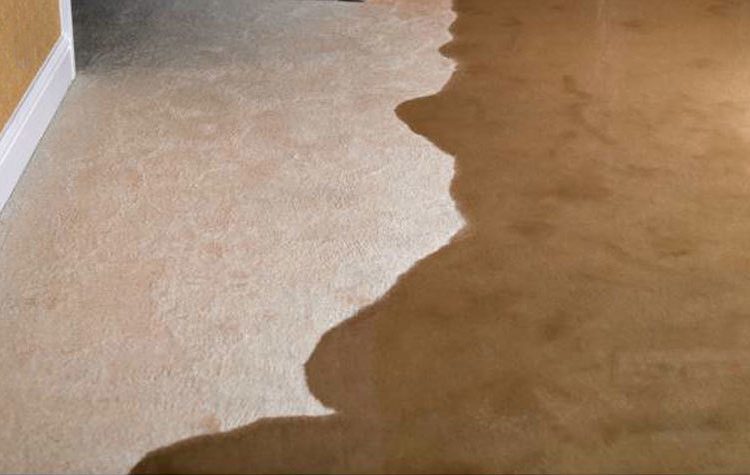
- By OC Blogger
- In Cleanup, Flood, Water Damage
What to expect when you have water damage
When customers experience water damage in their home, they often ask, what’s going to happen to their home, and how long will it take?
Step 1. Initial evaluation to determine how far the water has traveled, which building materials are affected, and the type of water involved. When remediating and drying a structure affected, by what is called category 1 water (water that is considered drinkable), fans are used to create surface evaporation in order to speed up the drying process in hopes of not needing to remove drywall, padding, carpet, or some other softer building materials. However, with category 2 water (known as gray water, such as you would find in a sink or a toilet tank or a washing machine), or category 3 water (anything that is past the P-trap and is now down in a waste line or toilet bowl), all drywall, carpeting, carpet padding, tack strip, and other soft items, like clothing, and upholstered furniture must be removed and thrown away.
Step 2. The Air Quality Management District of Southern California mandates that all structures need to be tested for asbestos prior to demolition or removal of building materials. Typically, an asbestos test is approximately $700, including the site visit and sample processing for one type of building material such as drywall; additional building materials will have additional charges. (Who pays for it?)
Step 3. Containment is built typically prior to the asbestos test results coming back and used to keep the warm dry air created and or any contaminants kept inside the work area along, and pets, and family members are kept out of the containment area for safety precautions. The decontamination area is built allowing for an area for workers to remove their personal protective equipment and suits (PPE), clean off the outside of bags of trash before entering back into the home, and staging materials (reword?).
Step 4. Demolition begins in the event there is “category 2 or 3 loss”, or there are any signs of mold, or the water has gotten into some structures that cannot be thoroughly dried in place, the removal of necessary building materials begins (reword). Typically, the technician only removes anything that can be salvaged or saved. Note, that if the asbestos test comes back positive, our portion of work is placed on hold and we will bring in a licensed asbestos abatement contractor to perform the asbestos basement portion of the scope of work. When the abatement contractor is done, they will call for an asbestos post-clearance test to certify all asbestos has been removed and it’s safe for us to continue the drying and cleaning process, and for the rebuild.
Step 5. Dehumidification starts by placing a dehumidifier within the affected area to pull the moisture and humidity out of the air, creating a dry environment so additional moisture can be pulled from the structure through evaporation. If no contaminants are found, fans or air movers are placed to speed up the drying process. An air scrubber is also placed inside the containment to catch any airborne contaminants and remove them prior to the exhaustion of the clean air back into the living space. (Reword) Air scrubbers are set up on what restorers call, Neg Air, when the air of the Home is pulled into the containment, cleaned through a HEPA-rated air scrubber, and pushed back into the home in a circular rotation.
Step 6. When everything is dried, and if there is any mold or sewage present, thorough cleaning of the containment is completed and clients may have a post-clearance mold test or post-clearance bacteria test performed to verify satisfactory standards.
If the test is ordered, we first allow one day for the air scrubbers to run after the last bit of work is completed to ensure a clean environment before testing.
Step 7. (days?) Results come back from the hygienist and equipment is removed. When the dehumidifiers and air scrubbers are pulled, we typically leave the plastic containment behind so that dust will not be spread throughout the home during construction.
The whole process of drying and cleaning can take as little as 4 days if there is no mold or sewage and a minimal amount of water, and up to 15 days, depending on a variety of contributing factors, such as how much water was absorbed into the building structure, the complexity of the access and how much mold or sewage is to be remediated thorough cleaning. (reword?)
Call professionals when you have water damage. Most water damage is not something that a homeowner can address on their own. It is a serious structural problem that must be dealt with by trained professionals. If you suspect that you have water damage, and you live in Southern California, do not hesitate to call our team of qualified experts today. 949-877-9697 Our services include Mold Testing & Remediation, Water & Flood Restoration, Fire & Smoke Restoration, Contents Cleaning, Odor and Sewage Removal, Roof Tarping, Rebuild, and more!



